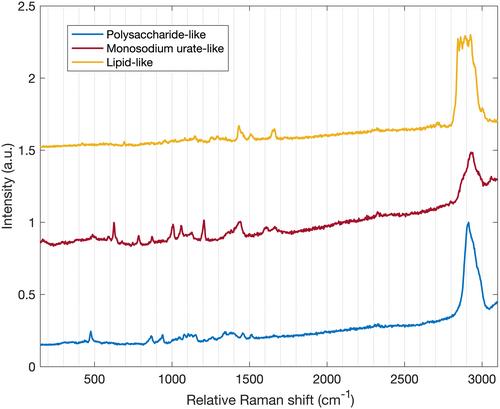Diagnostic Accuracy of Raman Spectroscopy Integrated With Polarized Light Microscopy for Calcium Pyrophosphate–Associated Arthritis
Abstract
Objective
We studied the performance of integrated Raman polarized light microscopy (iRPolM) for the identification of calcium pyrophosphate (CPP)–associated arthritis (CPPD).
Methods
This is a diagnostic accuracy study including 400 consecutive synovial fluid samples from a single hospital in the Netherlands. Accuracy measures were calculated against polarized light microscopy (PLM) and the 2023 American College of Rheumatology (ACR)/EULAR criteria set for CPPD.
Results
The interrater reliability between iRPolM and the 2023 ACR/EULAR criteria set for CPPD was strong (κ = 0.88). The diagnostic performance of iRPolM compared to the 2023 ACR/EULAR criteria set was sensitivity 86.0% (95% confidence interval [CI] 73.3–94.2), specificity 99.1% (95% CI 97.5–99.8), positive likelihood ratio 100.33 (95% CI 32.3–311.3), negative likelihood ratio 0.14 (95% CI 0.07–0.28), positive predictive value 93.5% (95% CI 82.2–97.8), negative predictive value 98.0% (95% CI 82.2–97.8), and accuracy 97.5% (95% CI 95.5–98.8). We allowed rheumatologists to rate the certainty of their microscopic identification of CPP and found a large correspondence between iRPolM and a certain identification (κ = 0.87), whereas only 10% of the uncertain CPP identifications could be confirmed with iRPolM. We identified several novel particle types in synovial fluid analysis, including calcium carbonate crystals, deposited carotenoids, microplastics, and three types of Maltese cross birefringent objects.
Conclusion
iRPolM can easily identify CPP crystals with a strong diagnostic performance. PLM alone is not specific enough to reliably resolve complicated cases, and the implementation of Raman spectroscopy in rheumatology practice can be of benefit to patients with suspected CPPD.


 求助内容:
求助内容: 应助结果提醒方式:
应助结果提醒方式:


